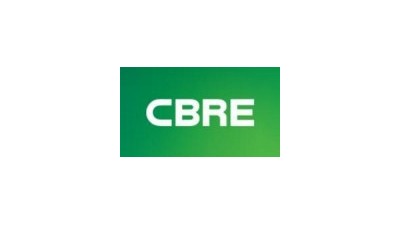Positive Outlook Amid A Moderate Slowdown: US CRE In 2017

The US economic landscape in 2017 will be influenced largely by policy changes from a shifting government. Currently, optimism is strong and fiscal growth is expected. At the same time, market conditions have softened in many major asset classes and uncertainty is still evident.
The US office market is poised for a moderate slowdown in 2017 as supply outpaces tenant demand. Intense competition to secure qualified talent will remain an issue, contributing to slower growth.
CBRE expects 2017 to register a net gain in office-using jobs of 273,400—down from an anticipated 413,600 in 2016 and the 2010-2016 annual average of 418,100. Additionally, more than 50M SF of office completions are expected in 2017.
Although low compared to previous cycles, the introduction of new product at a time of anticipated slow demand will likely result in a modest increase in the vacancy rate and a minimal increase in rents—approximately 1.5% over the next year. When compared to 2016, twice as much new supply is coming available in downtown markets in 2017, intensifying the expected increase in vacancy.

The tech sector will continue to be the largest driving force of job growth and space demand in the US. However, tech employment growth slowed to 4% in 2016, significantly below the yearly average of 7.3% over the past five years.
Occupiers continue to focus on attracting and retaining talent, although economic uncertainty has prompted many companies to implement cost-containment policies, which are expected to continue into 2017. Space efficiency and higher-quality work environments will remain key themes, driving demand for new/renovated buildings. A recent CBRE survey found more than 70% of corporate employees are willing to trade benefits like recognition programs and ease of commute in exchange for better office environments.
The lack of abundant talent is becoming evident across industries, and the pool of qualified tech workers is shrinking rapidly. As a result, US companies are turning to recent grads and foreigners. Growing the country's skilled labor base by fostering an environment that promotes innovation and involvement will be crucial to the tech sector’s continued expansion, specifically in hubs like Manhattan and San Francisco.

Technology is playing a pivotal role in how occupiers use space—and how they manage it. Effective use of occupier-related applications developed by fast-growing real estate technology firms allows managers to produce and collate data that helps them more efficiently assess and deploy real estate strategies. From smart buildings to space utilization, the uses and implications of technology for real estate are boundless.
On the retail front, consumer spending in 2017 is expected to repeat the growth it recorded in 2016, with retail and food-service sales (excluding motor vehicles and gasoline) forecast to rise by 4% to 5%. E-commerce retail sales are expected to grow by an additional 15.5%—on pace with recent years—and to account for approximately 9.2% of total retail sales by the end of 2017.
The rapid rise of nontraditional retail venues—pop-ups, food trucks and collaborations that require unique space set-ups—is driving changes in leasing structures. This is especially true in Manhattan, where these trends are widespread among all retail brand types and locations, as discussed in CBRE’s Q3 2016 retail wrap-up.
Looking across the county at commercial real estate in the year ahead, there’s plenty to be optimistic about, but in light of current market conditions, perhaps a little cautious optimism is warranted.
For more information and a look into other asset classes, read CBRE’s full US Real Estate Market Outlook report here.
To learn more about Bisnow partner CBRE, click here.

